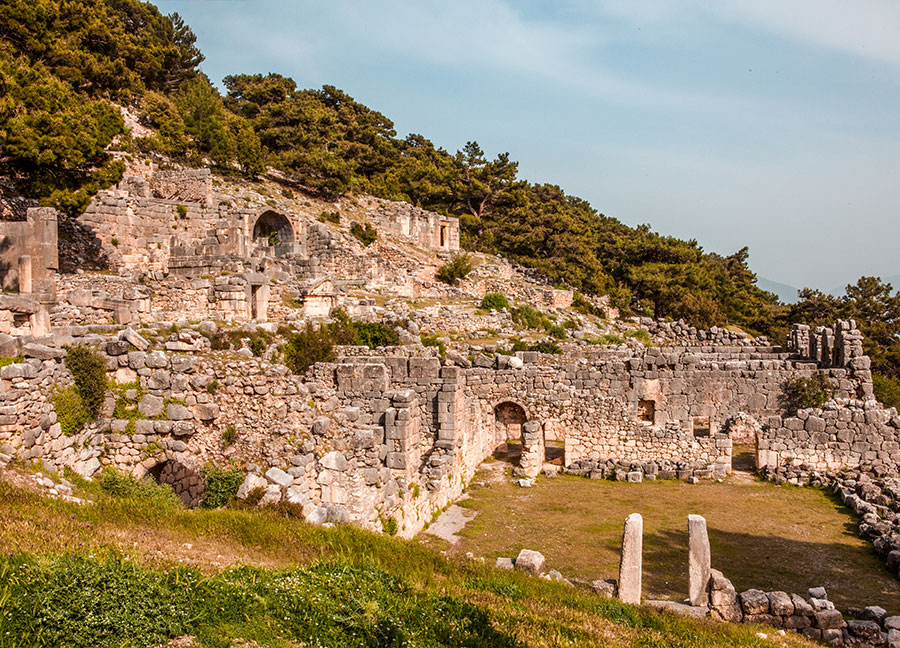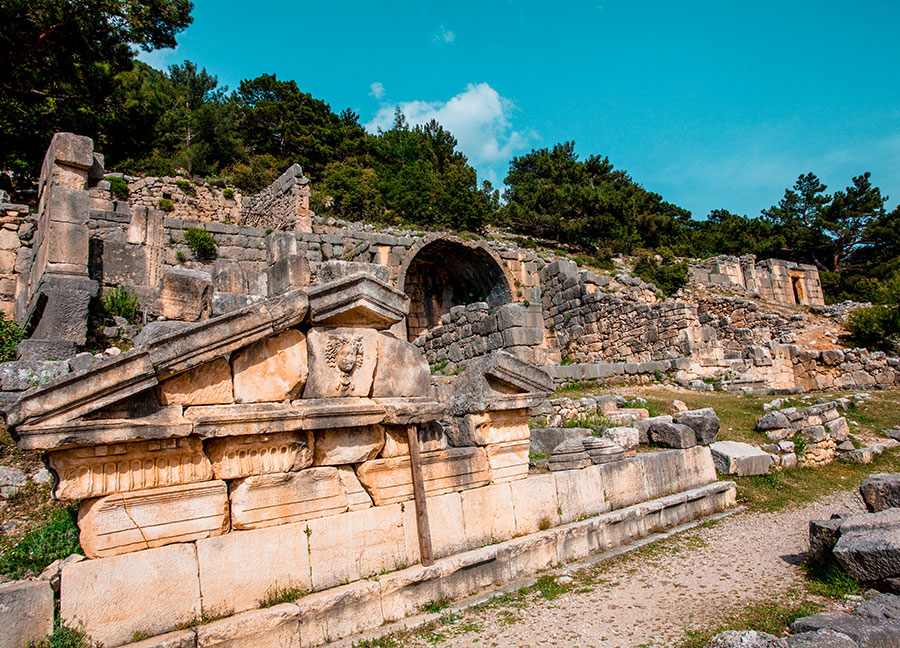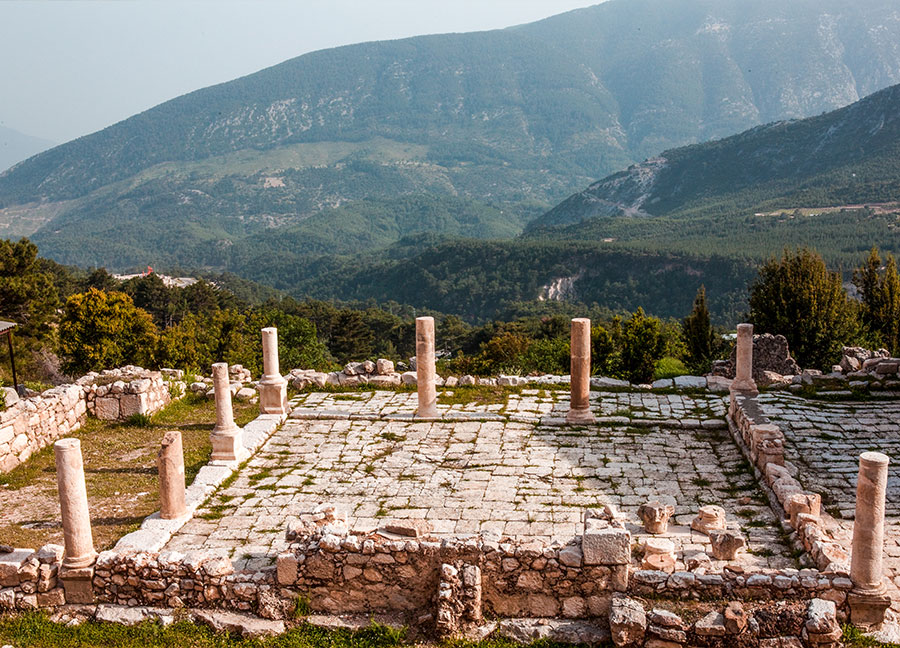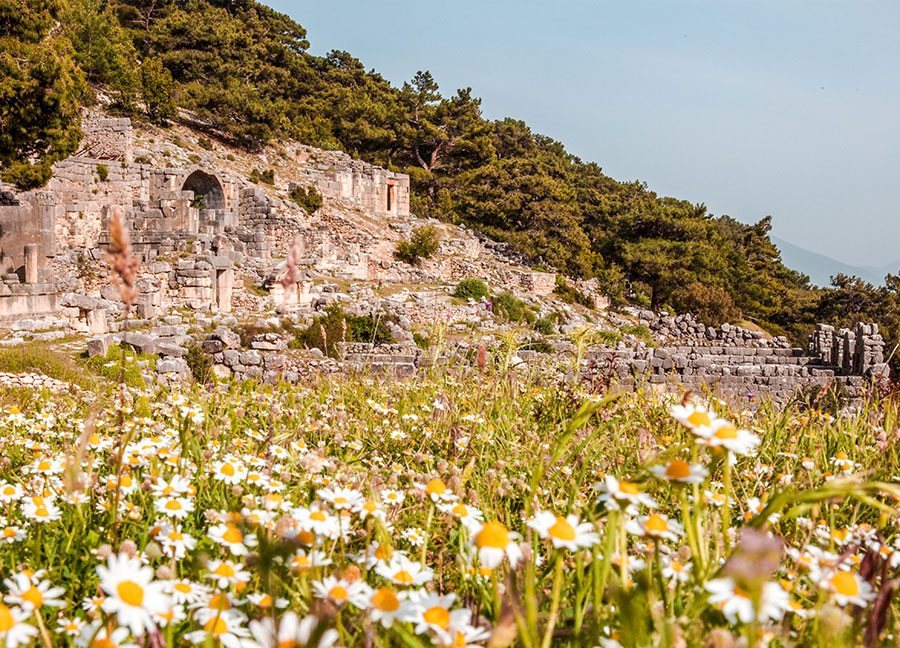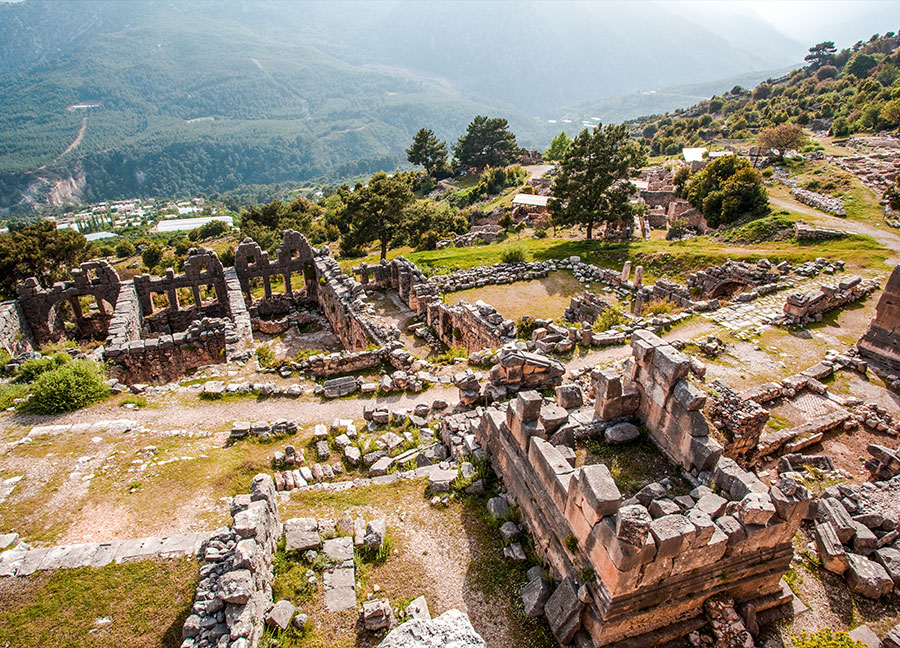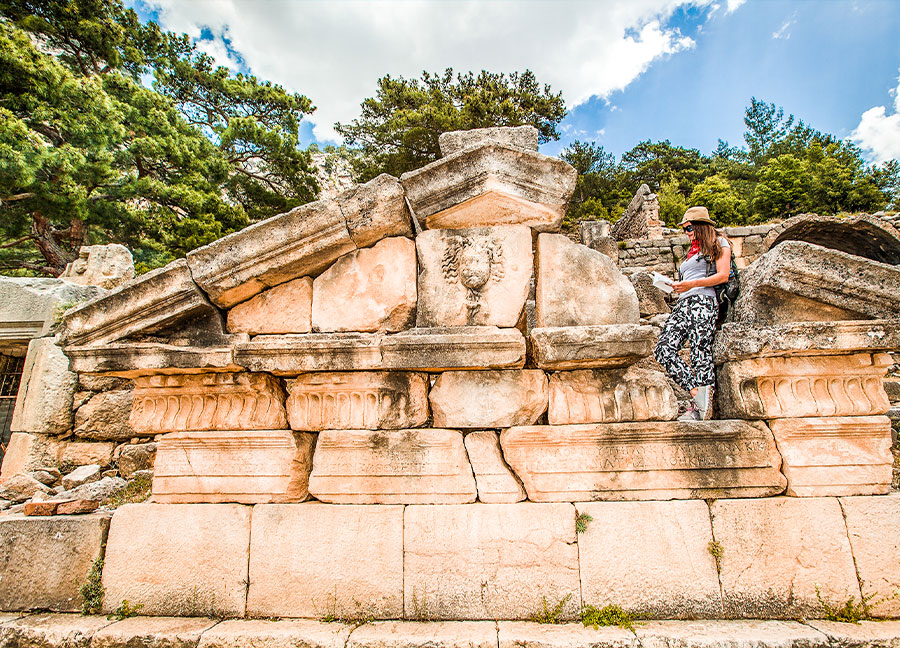Arykanda Ancient City is within the borders of Arif Village of Finike district of Antalya, approximately 30 km from Finike. The city is on land that starts from the bottom of the steep and steep rock called Şahinkaya and continues towards the south.
The name of the city, which means 'Ary-ka-wanda' in the Lycian language, 'The Place Next to the High Cliff', reflecting the native Anatolian language in terms of philology, indicates that it is one of the oldest cities in the region.
The earliest architectural data in the ancient city of Arykanda was discovered in 1838. They are the rock tombs dated to the end of the 4th century BC and the beginning of the 3rd century BC. The city first came under Persian rule and gained its freedom during Alexander the Great. After his death, the city, which lived under the domination of different states, became a member of the Lycian League in the 2nd century BC and minted coins in its own name. Thanks to its location on important trade routes and its productive water resources. It was seen as a safe accommodation place in the Roman Period and lived its brightest period in the 2nd and 3rd centuries. The city was inhabited until the great fire during the reign of Emperor Theodosios II in 435, started to get poorer after the earthquakes and lost its former glory in the 8th century.
The ancient city of Arykanda exhibits a very successful example of architecture with the planning of the buildings. It is a regular settlement in the form of terraces. The structure, located at the peak of the city, is the watchtower on the southwest skirt of Şahinkaya. It is thought that the acropolis to the south of the tower was the city's first settlement. To the east of this area is the Bouleuterion and the temple built in the name of the sun god Helios. After the watchtower, the other building at the top level is the stadium. There is a small but well-preserved theater on the terrace below the stadium. On the lowest terrace, there is the odeon. The two doors behind the Odeon open onto a ramped road, thus connecting the west street and the stairway street that borders the edge of the agora. The gymnasium and the bath are located side by side in the city's southeast. The burial site, called the 'Eastern Necropolis', draws attention with its monumental tombs, many of which have survived today. In the Early Byzantine Period, a church was built between the graves. The city's water requirement was met by channels carved into the surfaces of steep rocks at four different levels. In the city, the water channels, some of which pass under the main streets, are fine craftsmanship that reveals a great engineering intelligence.
The mysterious Arykanda Ancient City, hidden on the slopes of Beydağları, looks like an open-air museum that brings its visitors together with the past ages.



